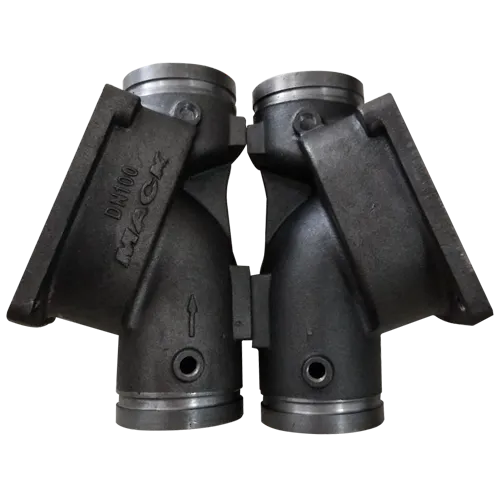Mobile:+86-311-808-126-83
Email:info@ydcastings.com
Innovative Designs for Double Helix Impellers in Fluid Dynamics Applications
The Double Helix Impeller Revolutionizing Fluid Dynamics
In the realm of fluid dynamics and engineering, the design and functionality of impellers play a crucial role in the efficiency of various systems, ranging from pumps and turbines to mixers and blowers. Among the myriad designs available, the double helix impeller stands out as a groundbreaking enhancement, combining innovative engineering solutions with practical applications across multiple industries.
Understanding Impellers
Before delving into the specifics of the double helix impeller, it is essential to grasp the general function of an impeller. An impeller is a rotating component within a pump or turbine that moves fluid by converting rotational kinetic energy into hydrodynamic energy. This mechanism is pivotal in applications such as water supply, chemical processing, and energy generation. Traditional impeller designs often feature simple blades, which, while effective, can lead to limitations in flow rates, energy efficiency, and fluid handling capabilities.
The Evolution to Double Helix Design
The double helix impeller design emerges as a response to the challenges posed by conventional impellers. Inspired by the architecture of DNA, the double helix structure allows for a unique fluid flow pathway that enhances efficiency and performance. Rather than relying on standard blade configurations, the double helix incorporates two intertwined helical blades. This distinct shape not only minimizes turbulence but also promotes a more stable and uniform flow.
One of the primary advantages of the double helix impeller is its ability to handle a wider range of fluid properties, including viscous and shear-sensitive fluids. In industries such as pharmaceuticals, food processing, and petrochemicals, where maintaining the integrity of delicate components is critical, the double helix impeller shines. It ensures smooth transportation of fluids while minimizing degradation.
Advantages of Double Helix Impellers
double helix impeller

1. Improved Efficiency The unique geometry of the double helix impeller promotes laminar flow over turbulent flow conditions, leading to significantly improved energy efficiency. Users often notice reduced energy consumption when using double helix systems, resulting in lower operational costs and a smaller ecological footprint.
2. Enhanced Mixing In applications where mixing is essential, such as chemical reactions or food homogenization, the double helix impeller provides superior mixing capabilities. The continuous and stable flow patterns created by the dual spirals ensure thorough blending of ingredients, optimizing product quality.
3. Versatility Across Applications Due to its robust design, the double helix impeller is adaptable to various sectors, including wastewater treatment, marine applications, and HVAC systems. It can accommodate different flow rates and fluid types, making it a versatile choice for engineers.
4. Reduced Maintenance Needs The innovative design reduces wear and tear on components due to minimized turbulence. As a result, systems with double helix impellers tend to experience lower maintenance requirements, leading to extended service life and reliability.
5. Quiet Operation One of the less recognized benefits of the double helix impeller is its quiet operational nature. The smoother flow dynamics achieved through its design reduces noise pollution, which is an advantage in environments where sound levels are a concern.
Conclusion
The double helix impeller represents a significant advancement in fluid dynamics, merging innovative design with practical benefits. As industries continue to seek more efficient, sustainable solutions, the adoption of double helix impellers is likely to become increasingly widespread. From enhancing mixing capabilities and increasing energy efficiency to reducing maintenance needs, the double helix impeller stands as a testament to how innovative engineering can address longstanding challenges in fluid mechanics.
As we move towards a future where efficiency and sustainability are paramount, the continued development and implementation of designs like the double helix impeller will undoubtedly play a crucial role in shaping the landscape of industrial fluid handling. With its myriad advantages, it is poised to revolutionize not just how we move fluids but also how we approach complex engineering challenges in an ever-evolving technological world.
-
Understanding Metal Casting TechniquesNewsApr.02,2025
-
Understanding Exhaust Manifolds for Enhanced Engine PerformanceNewsApr.02,2025
-
The World of Metal FabricationNewsApr.02,2025
-
Key Components for Pump and Turbo EfficiencyNewsApr.02,2025
-
Essential Tools for Automotive Maintenance and RepairNewsApr.02,2025
-
Durable Valve Components for Effective Water ManagementNewsApr.02,2025











